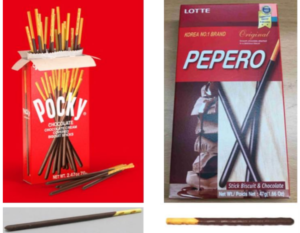Addressing for the first time whether state law has extraterritorial scope, the US Court of Appeals for the Sixth Circuit upheld a worldwide preliminary injunction against an alleged Chinese counterfeiter’s use of alleged trade secrets, citing a new US-China trade agreement. AtriCure, Inc. v. Meng, Case No. 20-3264 (6th Cir. Jan. 21, 2021) (McKeague, J.)
AtriCure is an Ohio company that sells surgical tools for the treatment of atrial fibrillation. AtriCure needed a Chinese agent to register and sell its product in China. Dr. Meng became AtriCure’s distributor in China from 2005 to 2017. After Meng signed multiple distribution agreements with AtriCure, including non-compete clauses and confidentiality agreements, he was given access to confidential technical documents describing AtriCure’s products. Unbeknownst to AtriCure, Meng was the president of AtriCure’s Chinese competitor, Med-Zenith. When Med-Zenith released a line of products that were strikingly similar to AtriCure’s in both form and operation, AtriCure sued for trade secret misappropriation under the Ohio Uniform Trade Secrets Act and sought a worldwide preliminary injunction to prevent Meng from continuing to manufacture and sell counterfeit versions of AtriCure’s medical devices. After the district court granted the preliminary injunction, Meng appealed.
Addressing Meng’s arguments on likelihood of success, the Sixth Circuit found that:
- The district court defined the alleged trade secrets with sufficient specificity because AtriCure had given Meng detailed drawings and manufacturing specifications.
- The district court had not clearly erred in relying on evidence that AtriCure provided the trade secret information to Meng or that Meng used the information where Med-Zenith had copied its entire product line from AtriCure.
- The district court had not clearly erred in holding that the production of an adapter that did not copy but still took advantage of AtriCure’s proprietary algorithm (i.e., by allowing Med-Zenith accessories to be used with AtriCure’s system) was likely a misappropriation of trade secrets.
Addressing the extraterritorial aspect of a worldwide injunction, the Sixth Circuit held that the district court did not abuse its discretion in issuing a worldwide injunction because the international reach of the injunction comports with the equities of the case and does not offend international comity. As to the equities, the Court noted that worldwide injunctions are common in trade secret misappropriation cases. As to comity, the Court found that Meng had failed to articulate any conflict and cited a recently signed agreement between the United States and China that “emphasizes trade secret protection” (Economic and Trade Agreement Between the Government of the United States of America and the Government of the People’s Republic of China, Jan. 15, 2020).
Finally, the Court addressed whether the Ohio Uniform Trade Secrets Act itself was entitled to extraterritorial scope. Because Ohio courts had not yet addressed the question, the Court conducted its own statutory interpretation and found that the intent of the statute (“the lodestar of statutory interpretation in Ohio”) favored extraterritorial application “at least in this case.”
read more

 Subscribe
Subscribe



